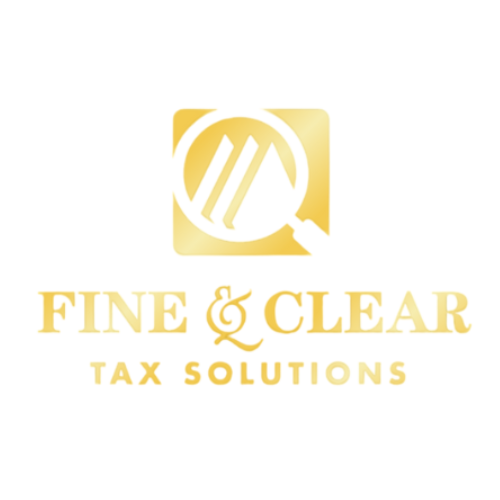When it comes to tax debts, the Internal Revenue Service (IRS) has a powerful arsenal of tools to collect what is owed — one of the most severe being a bank levy. For taxpayers dealing with unresolved tax issues, the threat of an IRS bank levy can be overwhelming. As we move through 2025, the IRS continues to actively use levies as a collection method, making it vital to understand how these levies operate, what triggers them, and how you can protect your hard-earned money.
This detailed guide will cover everything you need to know about IRS bank levies this year and why partnering with Clear Tax Resolution, led by tax expert Benjamin Pasternak, can safeguard your financial future.
What Is an IRS Bank Levy?
An IRS bank levy is a legal seizure of funds directly from your financial accounts by the IRS to satisfy unpaid tax debts. This means the IRS can instruct your bank or financial institution to freeze your account and send any available funds to the government. Unlike tax liens, which place a claim on your property, levies actively remove money from your possession.
Key points about bank levies:
- They can affect checking accounts, savings accounts, and sometimes retirement accounts.
- The IRS sends a formal notice before initiating the levy process.
- Once the levy takes effect, your access to the funds is immediately restricted.
This action can severely disrupt your financial situation, so understanding the process is crucial.
The Step-by-Step Levy Process
The IRS is bound by strict procedural rules before it can levy your bank account:
- Assessment of Tax Liability: The IRS calculates your outstanding tax debt.
- Notice and Demand for Payment: You receive a bill outlining what you owe.
- Final Notice of Intent to Levy and Notice of Your Right to a Hearing: Sent via certified mail, this notice warns that the IRS will levy your assets unless you act within 30 days.
- 30-Day Waiting Period: The IRS must wait at least 30 days before proceeding.
- Levy Notice Sent to Bank: Your bank is ordered to freeze your funds.
- 21-Day Holding Period at the Bank: The bank holds funds, giving you time to act.
- Funds Transfer to IRS: After 21 days, funds are sent to the IRS to satisfy the debt.
This structured process is designed to give taxpayers an opportunity to respond, negotiate, or appeal before funds are taken.
What Triggers an IRS Bank Levy?
Many factors can cause the IRS to resort to levying your bank accounts:
- Unpaid tax balances that have remained unresolved for months or years.
- Failure to respond to IRS notices or ignore payment demands.
- Lack of an active payment plan or collection alternative.
- Prior collection attempts, such as wage garnishments, failing to resolve the debt.
Because levies can cause significant hardship, the IRS typically uses them as a last resort after other collection methods.
The Financial and Personal Impact of a Bank Levy
The consequences of a bank levy reach far beyond just losing money. Consider the following effects:
- Loss of Immediate Access to Cash: You may lose funds intended for essential expenses.
- Disrupted Bill Payments and Financial Transactions: Automatic payments may fail, causing late fees or service interruptions.
- Business Interruptions: Business owners can suffer cash flow issues, affecting payroll and vendor payments.
- Continued Accrual of Penalties and Interest: The IRS continues to charge interest until the full debt is settled.
- Stress and Anxiety: The uncertainty of a levy creates mental and emotional strain.
Understanding these effects underscores the importance of proactive action.
How to Protect Yourself from an IRS Bank Levy
Preventing a levy before it happens is the best defense. Here are some ways to protect your finances:
- Respond Promptly to IRS Notices: Don’t ignore letters or calls; engage immediately.
- Set Up Payment Arrangements: Installment agreements or partial payment plans can halt enforcement actions.
- Explore Offers in Compromise: Negotiate to settle your debt for less than the full amount owed.
- Request Currently Not Collectible Status: If financial hardship prevents payment, this status can temporarily pause collections.
- Hire a Tax Resolution Expert: Navigating IRS rules is complex; professionals can safeguard your interests.
Clear Tax Resolution specializes in guiding taxpayers through these options, ensuring the IRS does not levy unnecessarily.
If You’re Already Facing a Levy: What Can You Do?
If your bank account has been levied, there are still remedies available:
- Request a Levy Release: Demonstrate financial hardship or other qualifying reasons to get the levy lifted.
- File an Appeal or Collection Due Process Hearing: Challenge the levy with the IRS.
- Seek a Refund for Improper Levy: If funds were seized incorrectly, recover them through administrative processes.
- Work Out a Payment Plan: Negotiate with the IRS to prevent future levies.
The critical step is to act quickly—delays reduce your options.
Common Misunderstandings About IRS Levies
Many taxpayers believe levies are automatic or unstoppable. Here are some truths to consider:
- The IRS must follow strict procedures before levying.
- Taxpayers have rights, including appeals and hearings.
- Levies do not seize exempt funds like Social Security benefits directly.
- Professional help often leads to better outcomes and less financial damage.
Awareness of your rights empowers you to fight back effectively.
Why Fine & Clear Tax Resolution Is Your Trusted Partner in 2025
With decades of combined experience, Fine & Clear Tax Resolution and Guy Finocchiaro provide compassionate, knowledgeable tax relief services tailored to your needs. What makes them stand out?
- A deep understanding of IRS collection tactics and negotiation strategies.
- Customized solutions ranging from payment plans to debt compromises.
- Transparent communication throughout the resolution process.
- Proven success in stopping levies and protecting clients’ assets.
- Commitment to relieving stress and restoring financial freedom.
If you’re facing the threat of an IRS bank levy in 2025, Fine & Clear Tax Resolution offers the expertise and support you need to regain control.

